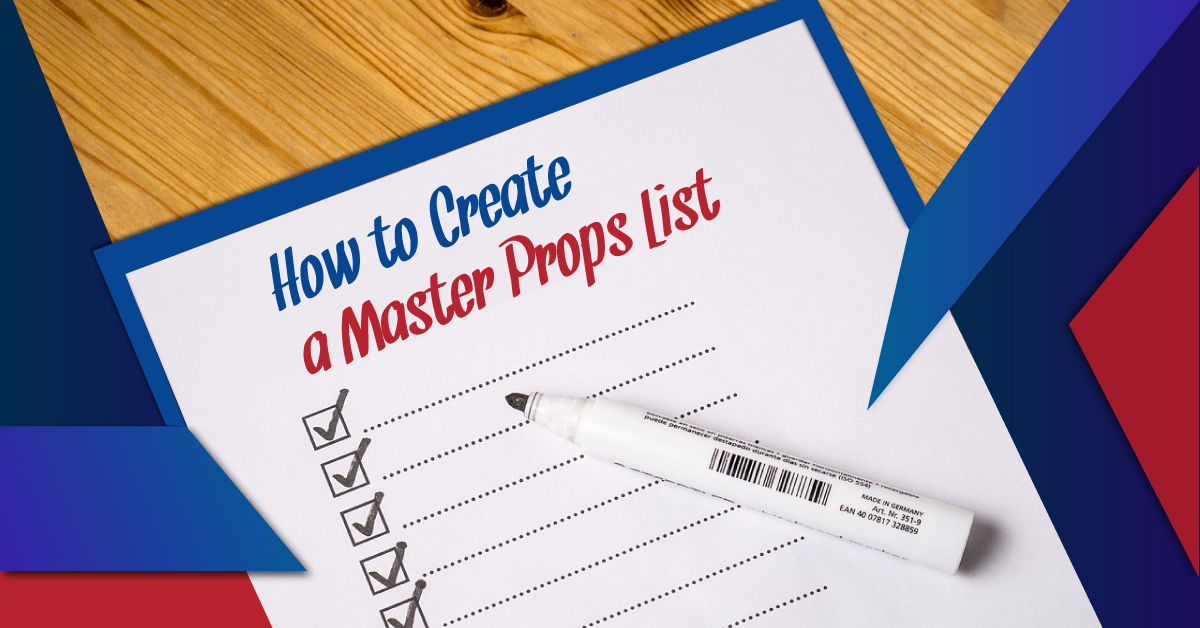How to Create a Master Props List
Having a master props list makes everyone’s life easier when it comes to knowing exactly what props are needed for your show, how each item is being acquired, and if a certain prop actually exists. Creating a master props list will help immensely in keeping your team organized and on the same page. It will also help to avoid problems such as props being missed or duplicated, anachronistic or incorrect-looking props being provided, or having the wrong quantity of props. Use the following instructions to create a master props list for your upcoming production. You can also use this as a classroom exercise – instructions and Rubric are available below!
1. Create a spreadsheet (e.g. Excel, Google Sheets) with the following headings:
- Title of the show with show dates
- Name and contact information of the props head
A brief description of the location of the show and time period (such as New Jersey, 1985). This way you won’t have to constantly include that information in the description (such as “80s style phone,” “80s style radio,” and so on).
Sub-headings:
- Act-Scene
- Page #
- Item:
- What the prop actually is, in the most simple terms (e.g. book, apple, sword, phone, etc.)
- Description:
- Any specific look, colour, texture? (For example, there are lots of different types of telephones: cordless, rotary, cell, home phone, office phone, pay phone…)
- Quantity:
- How many props are needed?
- On:
- Who brings the prop onstage?
- Off:
- Who takes the prop offstage?
- Additional notes:
- Where are you getting the prop? Is it an item that you have in stock, or do you have to buy it? Does it need to be special ordered?
- Who is responsible for acquiring the item?
- If it is borrowed, who does it have to be returned to after the show?
- Does it need any special care? (e.g. Is it a food prop that needs to be refrigerated? Is it a prop weapon that needs to be locked up in between performances?)
- Is it consumable? (Meaning you’d need at least one for every performance because the prop is eaten, destroyed, used up, or otherwise unusable from performance to performance.)
- Complete?
- Do you have the item? If so, mark it as complete!
2. Go through the entire script page by page, making notes on your spreadsheet of every item mentioned, as well as any inferred items. For example, a stage direction might say “the phone rings” and you would write down that there needs to be a phone in such-and-such scene.
3. Once you have created your initial script scan, sit down with the director and/or stage manager and go through the props list to see if any props have been added or omitted. From the example above of “the phone rings,” the director may indicate that the actor actually goes offstage to answer the phone, so an actual phone prop is not actually necessary.
4. If any props have been added to the list that were not originally noted in the script, add the prop to the list in the appropriate order relative to the other props.
5. You may wish to upload the list to a shared system (such as Google Drive) so the relevant crew members (e.g. director, stage manager, props head, props team members) can access and update the file in real time. Then when it’s show time, print the list and post it near the props table to use as a checklist and ensure every prop is accounted for.



